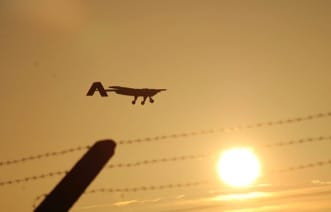
- Drones that transform human logistical services: independent independent drones are established in difficult -to -access areas, disaster relief support, conflict areas such as Ukraine, and harsh environments such as Antarctica, especially amid unprecedented discounts and financing inability.
- Building sustainable trade and local ability: Besides providing aid, drones create opportunities for local trade, developing skills and maintenance capabilities, and converting temporary humanitarian corridors into permanent economic and social infrastructure.
- Global market capabilities and commercial airlines: The drone logistics market is expected to grow from $ 1.6 billion in 2024 to more than $ 16 billion by 2030, with lessons from humanitarian operations that constitute the dependence of independent aircraft in major global logistics services.
While drones dominate the main headlines of their role in the war, less attention is paid to how to test the same technology in some of the most difficult humanitarian environments on Earth. However, it is here, not in the battlefield, the future of independent flight can be determined.
This year, the UNSAS Humanitarian Air Service (UNSAS) announced that it will reduce its fifth fleet due to a lack of financing of 73.5 million pounds. In countries where roads are improper, dangerous, or not present, flying is the only option. Therefore, while the demands of the logistical services are increasing dramatically, resources and budgets are shrinking.
This gap cannot be filled with a traditional plane alone. What is required is something cheaper for work, capable of long and strong flying enough for harsh conditions. A new generation of drones can do this exactly. This Windrasses already proves in living missions: supporting disaster areas, re -supplying the disputed areas in Ukraine, and reaching unknown parts of the Antarctica in the polar weather that would confirm most of the other aircraft.
Africa in particular shows both urge and opportunity. Besides immediate relief, drones can also open trade. Once the aid path is created in difficult to reach areas, the same corridor can be used by local farmers, merchants and producers to get their goods to wider markets. This transformation from the monochrome view to the two -way exchange is the real way of long -term sustainability, which transforms humanitarian missions into the foundations of permanent economic growth.
But the effect should not stop there. Each trip is also an opportunity to build local skills and create opportunities for people at the end of these flight tracks.
As we enter the era of artificial intelligence and independent aviation, these tasks should do more than connecting the goods. They must also enhance talent, provide tools, and ensure that societies have the ability to possess and control technology. Like Windracers Hub Operationsal Hub in Malawi, training and ratification of local operators, promoting maintenance on the ground, and including local property are all basic steps.
If drones can succeed in the most difficult humanitarian settings, they can succeed anywhere. Globally, the logistics and drone market is expected to go from about $ 1.6 billion in 2024 to more than $ 16 billion by 2030, and expands with an annual complex growth rate of about 48 percent.
The lessons learned from flying to African villages or areas related to conflict directly will be how to adopt independent aircraft in the prevailing logistics services. Just as flying in wartime accelerated the rise of airlines in the twentieth century, human aviation can define the standards of commercial independence in the twenty -first.
The future air fleet should not be cheaper and more independent, but it should be rooted in the societies that serve it.
Humanitarian aircraft may not charge newspapers in the way the military drones do, but they may prove that they are the most important test ever.